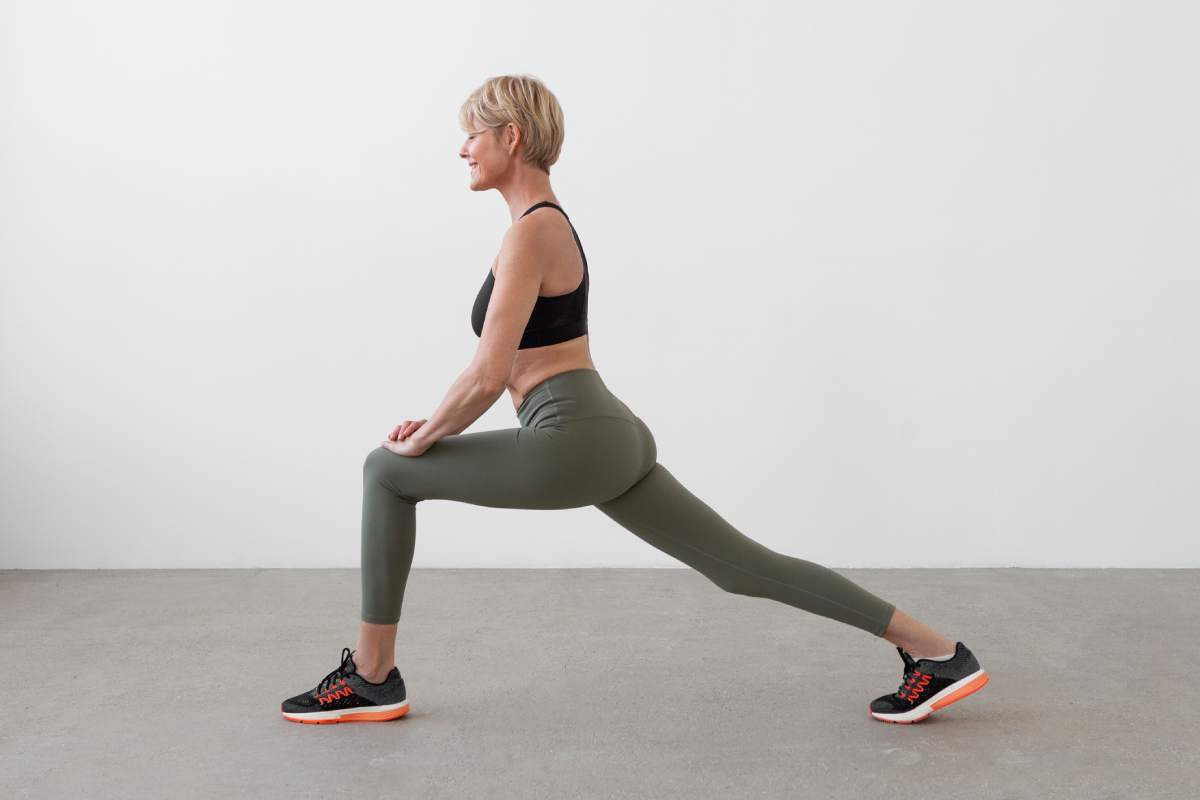After a solid workout, it’s easy to rush off and skip your cool-down. But a short, focused stretching routine can make a world of difference for your body. This guide lays out a straightforward 10-minute full-body stretch you can do after any workout—whether you’re new to exercise or have years of experience. No jargon, no fuss—just what you need to recover, improve flexibility, and feel better.
Why Stretch After Your Workouts
Stretching at the end of your workout isn’t just a formality—it’s a crucial step for recovery and long-term progress. Here’s why it matters:
- Boosts Flexibility and Range of Motion
Regular post-workout stretching helps your joints move more freely, making daily activities and future workouts easier. - Reduces Muscle Tension and Soreness
Stretching relaxes tight muscles, which can lower the risk of post-exercise aches and pains. - Improves Blood Flow and Recovery
Gentle stretching increases circulation, delivering nutrients and oxygen to tired muscles and speeding up recovery 3. - Prevents Injury
Flexible muscles and joints are less likely to strain or tear, helping you avoid setbacks. - Relieves Stress
Stretching calms the nervous system and helps you unwind after intense activity.
How to Prepare for Your Stretching Routine
Before you start, set yourself up for a safe and effective stretch:
- Find a Comfortable Space
Use a yoga mat or towel on a flat surface. - Wear Loose, Comfortable Clothing
Clothes that allow free movement make stretching easier. - Focus on Your Breath
Deep, steady breathing helps your muscles relax and boosts the benefits of each stretch. - Listen to Your Body
Stretch to the point of mild tension, not pain. If something doesn’t feel right, ease off or modify the position.
The 10-Minute Full-Body Stretch Routine
This routine is designed to hit all major muscle groups in just 10 minutes. Hold each stretch for 20–45 seconds per side, or as long as feels comfortable.
1. Child’s Pose (Back, Hips, Shoulders)
- How to do it:
Start on all fours, then sit your hips back toward your heels, stretching your arms forward and lowering your forehead to the mat.
Tip: Crawl your fingers forward for a deeper stretch along your back and shoulders. - Benefits:
Releases tension in the lower back, hips, and shoulders. Promotes relaxation and recovery.
2. Cat-Cow Stretch (Spine, Neck, Chest)
- How to do it:
Stay on all fours. Inhale as you arch your back, lifting your head and tailbone (Cow). Exhale as you round your spine, tucking chin and pelvis (Cat).
Repeat for 30–60 seconds, moving with your breath6. - Benefits:
Increases flexibility in the spine, neck, and shoulders. Relieves tension and improves posture.
3. Seated Forward Fold (Hamstrings, Lower Back)
- How to do it:
Sit with legs extended. Inhale, then exhale as you hinge at the hips and reach for your toes, ankles, or shins.
Keep your back long and avoid rounding your spine. - Benefits:
Stretches the hamstrings and lower back. Helps release tension built up during workouts.
4. Butterfly Stretch (Hips, Groin)
- How to do it:
Sit up tall, bring the soles of your feet together, and let your knees fall out to the sides. Hold your feet and gently press your knees toward the floor. - Benefits:
Opens the hips and stretches the inner thighs and groin.
5. Neck Rolls (Neck, Upper Back)
- How to do it:
Sit or stand tall. Slowly drop your chin to your chest, then gently roll your head to one side, back, and the other side in a smooth circle.
Repeat in both directions. - Benefits:
Relieves tension in the neck and upper back, especially after upper body workouts.
6. Triceps Stretch (Arms, Shoulders)
- How to do it:
Reach one arm overhead, bend the elbow, and touch your upper back. Use your other hand to gently press the elbow.
Switch sides after 20–30 seconds. - Benefits:
Stretches the triceps and the muscles around the shoulder joint.
7. Side Stretch (Obliques, Lats)
- How to do it:
Stand or sit. Reach one arm overhead and lean gently to the opposite side, feeling a stretch along your side.
Switch sides after 20–30 seconds. - Benefits:
Lengthens the muscles along your torso and helps release tension in the back and sides.
8. Glute Stretch (Glutes, Lower Back)
- How to do it:
Lie on your back, cross one ankle over the opposite knee, and gently pull the uncrossed leg toward your chest.
Switch sides after 20–30 seconds2. - Benefits:
Targets the glutes and lower back, areas that often tighten during exercise.
9. Hamstring Stretch (Hamstrings, Calves)
- How to do it:
Stand or sit with one leg extended. Reach toward your toes, keeping your back straight.
Switch legs after 20–30 seconds. - Benefits:
Stretches the back of the thighs and calves, improving flexibility for walking, running, and lifting.
10. Low Lunge (Hip Flexors, Quads)
- How to do it:
Step one foot forward into a lunge, keeping your back knee on the ground. Sink your hips forward and down.
Switch legs after 20–30 seconds2. - Benefits:
Opens up the hip flexors and stretches the quadriceps, counteracting the effects of sitting and cycling.
11. Pigeon Pose (Hips, Glutes)
- How to do it:
From all fours, bring one knee forward and place it behind your wrist, extending the other leg back. Lower your hips and chest toward the floor.
Switch sides after 20–30 seconds. - Benefits:
Deeply stretches the hip rotators and glutes, helping to release tension from lower body workouts.
12. Chest Opener (Chest, Shoulders)
- How to do it:
Stand tall, clasp your hands behind your back, and gently lift your arms while opening your chest.
Hold for 20–30 seconds4. - Benefits:
Stretches the chest and shoulders, counteracting the forward hunch from desk work or upper body training.
Tips for an Effective Cool Down
- Breathe Deeply
Inhale and exhale slowly during each stretch. This helps your muscles relax and increases the effectiveness of each stretch1. - Move Gently
Ease into each position—never force a stretch or bounce. Gentle movement reduces the risk of injury. - Modify as Needed
If a stretch feels too intense, back off or use props like a towel or yoga block for support. - Stay Consistent
The more regularly you stretch, the greater the benefits for flexibility and recovery13.
Common Mistakes to Avoid
- Rushing Through Stretches
Take your time. Holding each stretch for at least 20 seconds gives your muscles time to relax and lengthen2. - Holding Your Breath
Remember to breathe deeply and steadily. Breath-holding increases tension rather than releasing it. - Ignoring Pain Signals
Stretching should never hurt. If you feel sharp pain, stop and adjust your position. - Skipping Tight Areas
Focus on muscles that feel especially tight after your workout—they need extra attention.
How to Make Stretching a Habit
- Schedule It
Treat stretching as an essential part of your workout, not an optional extra. Set a timer for 10 minutes after each session. - Track Your Progress
Notice improvements in flexibility, reduced soreness, and better performance over time. - Mix It Up
Try different stretches or routines to keep things interesting and target new areas. - Stay Accountable
Stretch with a friend, join a class, or use a stretching app to stay motivated.
Conclusion
A 10-minute full-body stretch after your workout is one of the simplest ways to support your body’s recovery, prevent injury, and boost flexibility. You don’t need fancy equipment or advanced skills—just a bit of time and attention to your body. Make stretching a regular part of your routine, and you’ll notice the difference in how you feel, move, and perform.
Give this routine a try after your next workout. Notice how your body responds, and share your experience or questions in the comments. Stretching isn’t just about recovery—it’s about investing in your long-term health and well-being.




